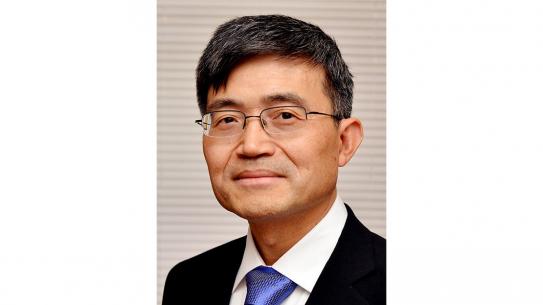Tandon’s uncommonly innovative research displayed at the Brooklyn Commons
2022 Research Excellence Exhibit
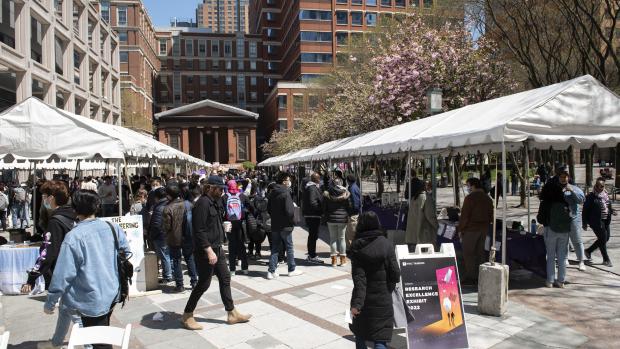
The annual Research Expo took place on Friday, April 29, 2022, the first to be held live at the Brooklyn Commons since 2019 due to the pandemic. ©Olivo: Courtesy of NYU Photo Bureau
In 2013 NYU Tandon began holding an annual research exhibition that put on display dozens of student and faculty projects. The aim was to celebrate the accomplishments of the school’s researchers and illustrate to the general public the scope of engineering and the applied sciences — and their potential for improving the world.
The 2022 Research Excellence Exhibit — the first to be held live at the Brooklyn Commons since 2019, because of the pandemic — accomplished all those goals, highlighting Tandon’s seven areas of research excellence: Communications/IT, Cybersecurity, Data Science/AI/Robotics, Emerging Media, Health, Sustainability, and all things Urban.
The excitement began even before the first spectators arrived. Jay Patel — who along with teammates Natalie Feng, Gabrielle Naquila, and Tazwar Belal presented a smart wearable device they had built to predict human gesture based on muscle vibrations — explained: “Seeing all participants come through the purple gates to set up their projects full of passion, excitement, and anticipation was my favorite part of the event. Knowing that all participants were preparing to share their innovative discoveries with the world represented to me the most authentic form of engineering.”
He found interacting with visitors to their booth another rewarding part of the day. “From seasoned engineers scouting to see new talent to 7th graders curious about what the future holds for them, it was inspirational to know that we all share the same curiosity and interest in innovation,” he said.

Casey Bloomquist, who works with Professors Miguel Modestino and Eray Aydil to design alternative reactors with the potential to decrease the carbon footprint of the chemical manufacturing industry concurred that the interaction made the Research Excellence Exhibit a particularly rewarding experience. “I was demonstrating a plasma electrochemical reactor, and a group of middle-schoolers were very excited about its potential,” he recalled. “I assumed I would have to explain everything on a very basic level, but when I asked them if they knew what a plasma was, they assured me they already had a firm grasp of its electrical conducting ability thanks to their own science classes.”
Throughout the event, Bloomquist found himself discussing not just plasma reactors but the 3D printing process he used to build his prototype. “The exhibit attracted a crowd that was eager to learn about everything,” he said. “I found it very useful to me, as an engineer, to explain to people how the work will benefit society; it reminded me to step back and appreciate the big picture of why our work is so important.”
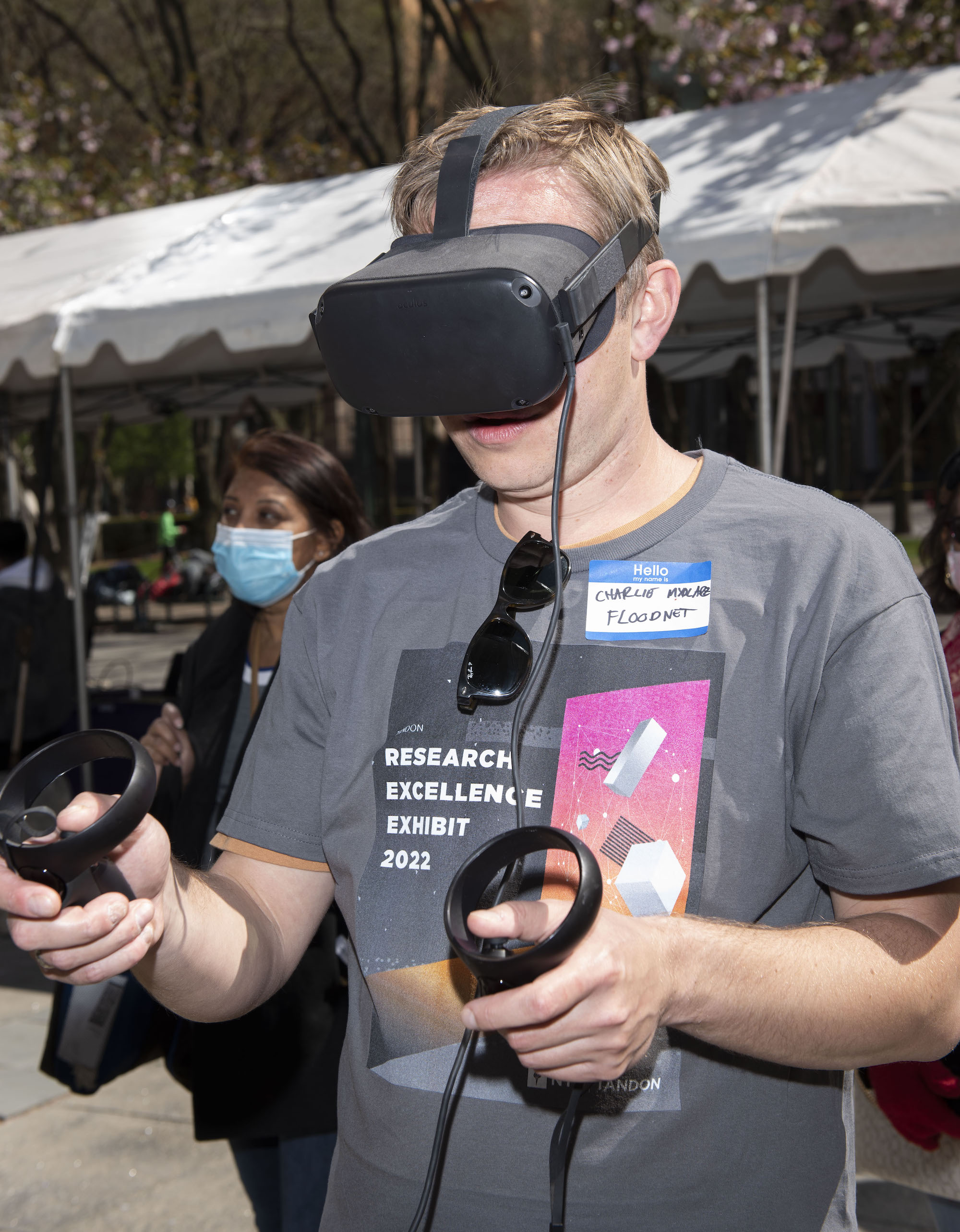
There was plenty for the eager crowd to learn about; the exhibits included an augmented-reality game that helps its players prepare for natural disasters, a lightweight building material that incorporates micro-balloons made of glass, a self-contained and self-sustaining urban farming system, a squad of quadrotor drones, and a robotic cart that you might one day see rolling down the aisle of an airplane.
Some projects highlighted not a finished product but the research process itself. “What makes research unique is not just the tangible thing you might build as a result, but the ability to make people think differently,” said Sumish Pal Singh Ajmani, who collaborated with Karan Parikh on the cybersecurity project “Exposing encrypted wireless data transfer in wearable IoT devices.” “We wanted to spread awareness by showing how easy it is for a user to get fooled by new cyber security tools in the market. The interest from the crowd took us by surprise since we were competing for attention with AI bots and other admittedly compelling things, but it was great to see attendees starting to think about the cybersecurity of their smart devices.”
While the crowd had difficult choices to make about which exhibits to view next, another group had an even harder task: the judges who were charged with naming three winners from among the teams in NYU Tandon’s VIP (Vertically Integrated Projects) initiative, which offers undergraduates invaluable experience applying engineering principles to pressing global challenges, and three winners from among the other exhibits.
2022 Exhibit Winners
Vertically Integrated Projects (VIP) Category
First Place: “Smart, Wearable Human-Machine Interface: From Muscle Vibration towards Gesture Prediction”exhibited by Jay Patel, Natalie Fang, Gabrielle Naquila, and Tazwar Belal, which hoped to help usher in a new era of AI to assist those with sensorimotor disabilities in their daily lives.
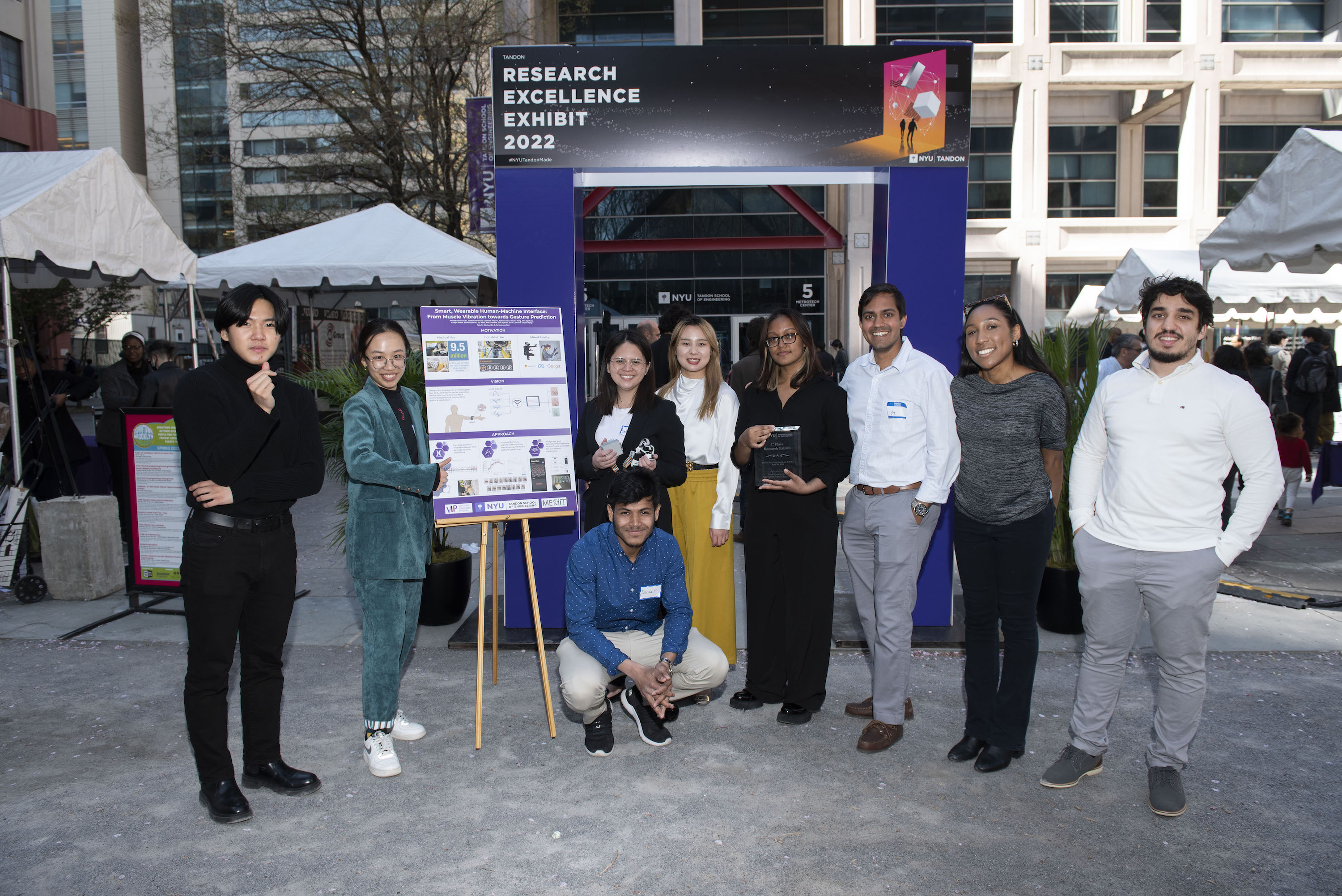
Second Place: “Flutec: An Influenza Diagnostic Test” exhibited by Neelam Pandya, Katarina Nowack, Mira Jagtiani, and Nicole Fraynd, who were inspired by the ubiquity and ease of COVID-19 saliva tests. Jagtiani explained to a reporter covering the event, “As a scientist, sometimes you can get lost in the deep science of anything, but we wanted to focus on designing something people wanted and could use.”
Third Place: “SoundCells: Making Music Technology Accessible,” exhibited by Fabiha Ahmed, Michael Gardell, Michael Zachary, and Isabel Huey, who collaborated with vision-impaired musicians to devise a web-based music notation technology for writing print and braille music.
“Each and every VIP project provides a great hands-on learning experience for our students,” said Jack Bringardner, the initiative’s director. “It’s inspiring for them to discover that they can make a real-world impact even within the early years of their college careers. So while these three projects were singled out today as particularly impressive, everyone who participates in VIP actually wins.”
General Exhibits category
First Place: “Walking Robot: Balance Stability & Power Consumption,” exhibited by Associate Professor Joo H. Kim, William Peng, Hyunjong Song, Stacy Ashlyn, and Vishal Oza, who used their booth to explain that penguins are a good source of inspiration in robotics since they live on challenging terrain and are energy efficient. The diversity of bio-inspired design was on full display as Peng and Song demonstrated the challenge of maintaining stability and conserving energy for a walking humanoid robot while Ashlyn's penguin robot waddled nearby.
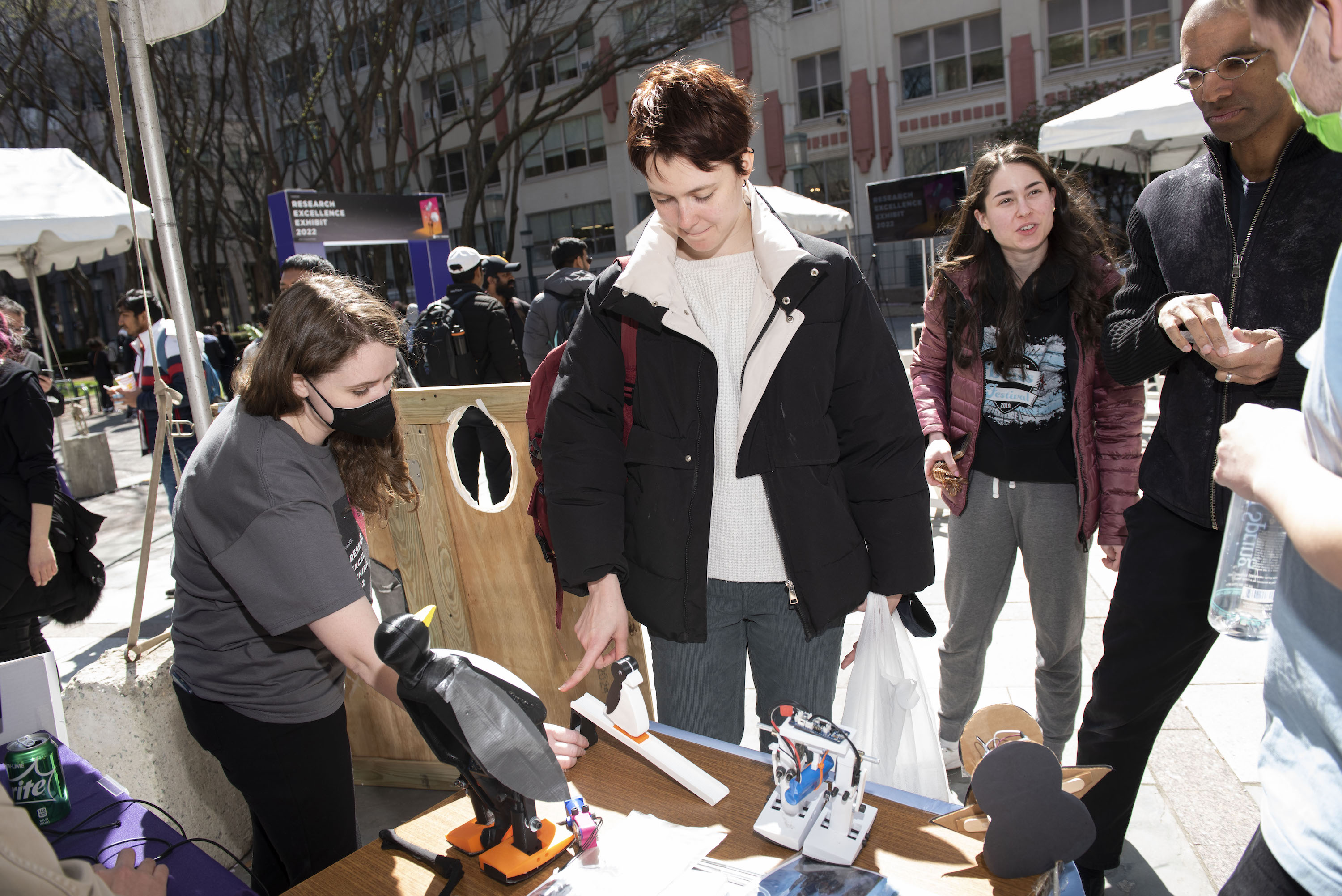
Their display featured kid-friendly penguin matching games and penguin ramp walking toys, because, as Ashlyn asserted, “The most important take-away for the public is that research is fun and accessible.” While it was enjoyable interacting with young attendees, the highlight of the day for her came later, when Dean Jelena Kovačević presented her with the first-place award. “As a female engineer myself, she serves as a huge role model for me,” Ashlyn explained. “Her successful career is inspirational and as dean, she gives me a sense of belonging at Tandon.”
Second Place: “Plasma Electrolysis towards Decarbonization” exhibited by Casey Bloomquist, Miguel Modestino, and Eray Aydil. “Casey did a great job in getting attendees of all ages excited about the possibility of cleaner chemical manufacturing. I think he opened many people’s eyes to how broadly that industry affects all of our lives, and they left the exhibit with a deeper understanding of the steps we’ll need to take to protect the planet," commented Modestino. "Casey was just one of many presenters making sure the exhibit was a valuable, enlightening, and inspiring experience for everyone who came.”
Third Place: “FloodNet: Realtime Urban Flood Sensing,” exhibited by Charlie Mydlarz, Praneeth Challagonda, and Polly Pierone, who helped develop a network of urban flood sensors and dashboard to give reporters, policymakers and researchers a critical tool in enabling coastal cities to adapt in the face of stronger storms and rising sea levels.
Dean Kovačević expressed excitement at the resumption of the in-person version of the event. “Every year I look forward to our annual Research Excellence Expo, which allows us to show the community how engineers, including students on our VIP teams, are impacting society in positive ways,” she said. “And it’s wonderful that this year, visitors can once again see, touch, hear and interact with many of these technologies and practical solutions to problems we all face.”
Natalie Feng, a member of the top-ranked VIP team who was participating for the first time, summed up the feelings of many, enthusiastically saying, “I’m motivated to dig even deeper into my project now. I wish we could have more research events exactly like this one!”
All photographs ©Olivo: Courtesy of NYU Photo Bureau




